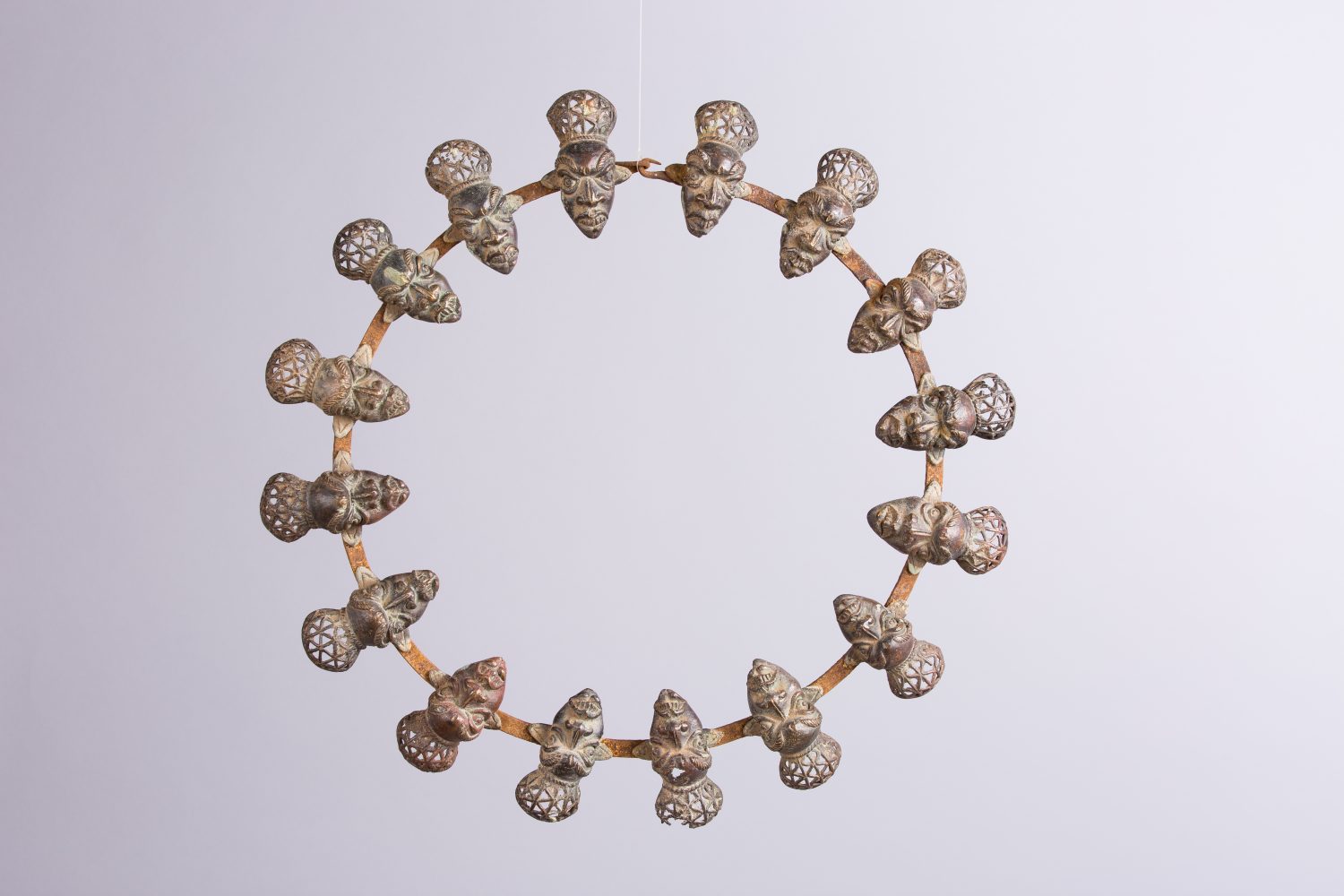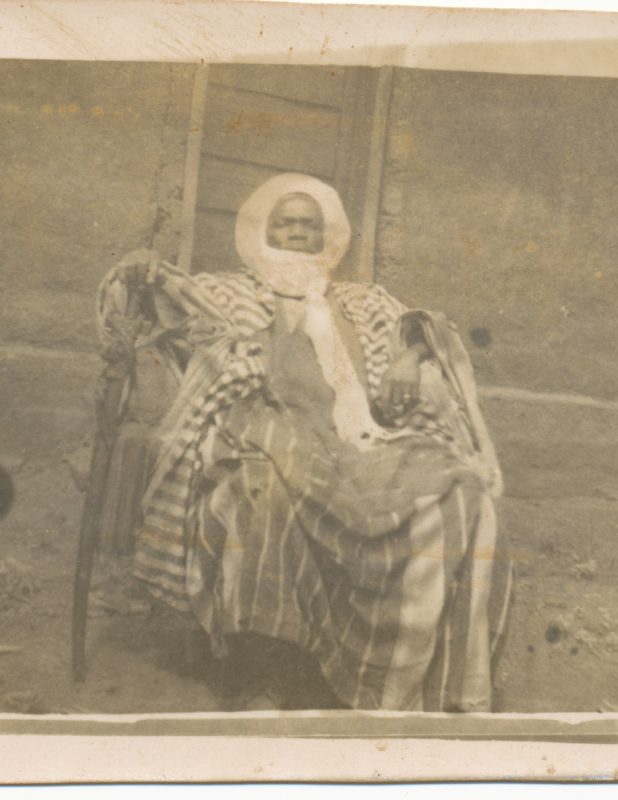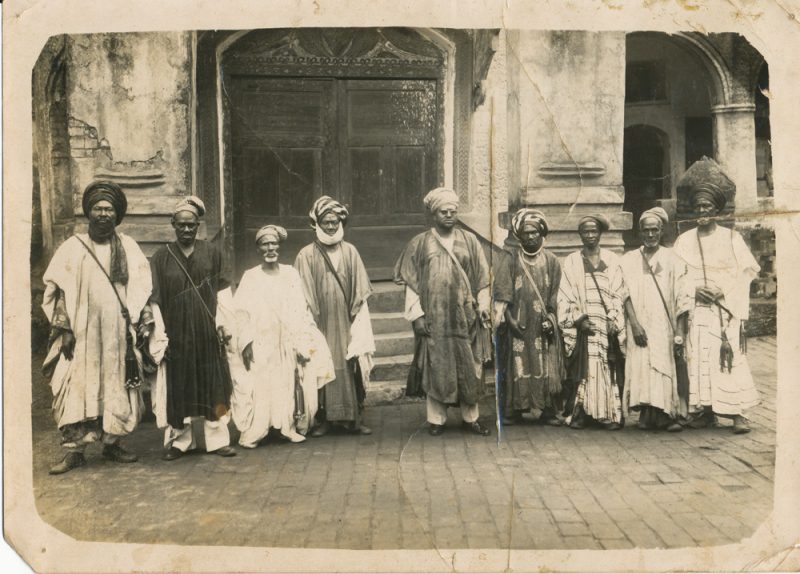Eventually I began to work for my paternal grandfather (Figure 3) in his iron studio, not far from our family compound in Foumban. As part of my coming of age, during school holidays, I assisted many traditional ritual festivals around the Grassfields Kingdoms, seeing many sacred masks in action while helping in dances, festivals, and even enthronements.
In 1969, nine years after Cameroon’s independence, my father met with the first Western tribal art collectors in Douala and Yaound. Among them was Albert Gordon, owner of the Tribal Arts Gallery in New York City. He had the passion, vision and knowledge to understand the importance and heritage of African art. He and my father became good friends, traveling and researching together until 1985. From then, my father often accompanied Westerners around Cameroon and neighboring countries, helping them to collect art and artifacts. I began to go along with them.
In 1974, while we were in Oku Kingdom in the Northwest Grassfields, my father gave me a symbolic gift of two wooden spider motif stools. They were the first pieces I received from him and it was as if he enthroned me. In our culture, we are aware that spiders work very hard spinning and repairing their webs. So with these stools he was giving me a message: I should work hard without stopping, just as the spider does! And I have done that in my life.
My first collecting trip out of my country was to Nigeria with my father in 1977. We traveled to the Benue River Valley and to the Calabar where we saw many ritual festivals performed by Mumuye, Chamba, Montol and Jukun peoples. For two months, we traveled by any means we could find: by car on roads that were sometimes very rough, by foot or by bicycle when there were no roads at all. Once, en route, we tried to swim across a river and were almost swept away by the current. We were very lucky to come back alive! My father really trained me for life’s situations. That was my initiation into manhood. He was a very strong man, and one of the best art specialists in Cameroon. My mother Nji Adja Pasma Mefire also had a good eye for art, and was his treasured advisor. I eventually made collecting trips on my own to the Congo, Gabon, Burkina Faso (among the Lobi) and other countries while also attending many rituals and festivals in Cameroon and other countries, such as Tanzania, where I traveled in 1997.
In 1979, after general study at the secondary school of the College LELE of Nkongsamba in the Littoral Province of Cameroon, I moved to Yaound, the capital city, to establish a private office and gallery. I became recognized as an expert and advisor in tribal arts. From 1979 to 1985, I helped collectors and museums in our capital city. I spoke with many collectors and dealers about their collections which also helped me to learn. I developed fluency in many languages and dialects including Bamum, Bamileke, French and English. My library of books and catalogs about African art continued to grow. Through it all, I remembered watching my grandfather and my father forging iron. I saw and was around so much African art for so many years, which reinforced my love, taste, knowledge and passion for ritual objects. In that process, I developed appreciation for the power and deep knowledge that was contained in the masks and sculpture.
On February 10, 1986, I decided to travel to the United States. At that point, I felt I had enough experience with the arts of Africa to reach out to America. It was my first trip out of the African continent. Albert Gordon and Leonard Kahan welcomed me and introduced me to many collectors and museums around the United States.
After my father passed away in 2005, I succeeded him as the head of the family. In a special ceremony in Foumban, I also inherited his title, becoming Nji Amadou Njoya (Figure 4). The title “Nji” is given to the royal family and to persons of importance in the Bamum Kingdom. The title carries responsibilities with it, including assisting the Fon at all times, traveling with him for cultural or political purposes, informing him of new ideas that may benefit the Kingdom and taking part in certain ceremonies. I must learn our traditions and pass them on to young people in our Kingdom. Part of that is to remember the place of the arts within our culture.




